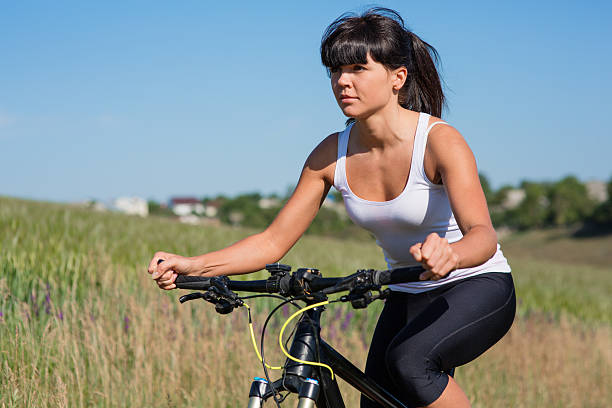Balancing Rest and Activity: Avoiding Overtraining in Cycling
This post contains affiliate links. This means I will make a commission at no extra cost to you should you click through and make a purchase. Read the full disclosure here.
Because burnout isn’t part of the fitness plan.
So, you’ve finally found your groove on the bike. You’re riding more often, feeling stronger, maybe even looking forward to those weekend trail sessions (who knew?).
But then—ouch. Fatigue creeps in. Your legs feel like bricks. Motivation dips. Suddenly, cycling feels… hard again.
Sound familiar? You might be flirting with overtraining.
Let’s talk about how to keep the balance between pushing your fitness and giving your body (and brain) the rest it actually needs.
First, What Is Overtraining?
Overtraining happens when you do too much exercise without enough recovery.
It doesn’t just mean sore legs. It can show up as:
- Constant fatigue
- Irritability or mood swings
- Sleep trouble
- Loss of motivation
- Weaker performance, not better
- Increased risk of injury
And for women especially, stress from overtraining can mess with hormones and overall wellness.
Why Rest Is Part of the Plan
Rest days are not “cheating.” They’re when your muscles repair, your energy resets, and your fitness actually improves.
Think of rest like charging your battery. You wouldn’t go on a road trip with 5% left, right?
Even pro athletes schedule recovery days, and guess what? You deserve that same respect.
How to Listen to Your Body
Here’s a quick way to check in with yourself:
- Are you still excited to ride?
- Are you sleeping well?
- Are you recovering quickly after rides?
- Do you have energy throughout the day?
If the answer is “not really” to most of these, your body might be waving a white flag.
It’s okay to pause.
Rest Doesn’t Mean Couch Potato (Unless You Want It To)
Active recovery is your friend.
Try:
- A slow walk
- Gentle yoga (like this mat that makes stretching feel like a treat)
- Light stretching with resistance bands
- A casual ride just for fun—not fitness
You’re still moving, but your body gets a break from intensity.
How to Build a Balanced Riding Routine
A good weekly structure might look like this:
- 2–3 days of moderate rides (30–60 mins)
- 1 day of higher effort or intervals
- 1–2 days of rest or active recovery
- Optional: 1 day of strength training or cross-training
Remember, this is just a guide. Your life, body, and energy levels might shift—and your plan can too.
Using a fitness tracker can help you see when your heart rate stays high even at rest—a sign it’s time to slow down.
Give Yourself Permission to Rest
This is your journey.
Some weeks will be ride-heavy. Others might be slower. That’s the rhythm of real life—and real fitness.
Pushing through exhaustion isn’t strength. Knowing when to pause? That’s power.
Final Thoughts
Your bike is a tool for wellness, not burnout.
By honoring your need for rest, you’ll stay consistent, injury-free, and mentally excited to ride.
So if you need the reminder: Rest is not lazy. It’s smart. It’s strong. And it keeps the wheels turning long term.








